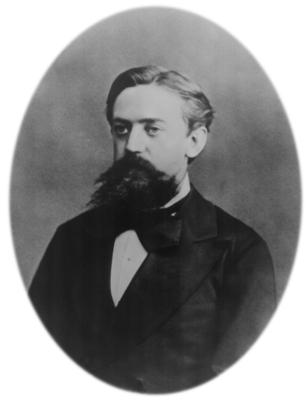
In an unassuming house on a golf estate in Centurion, south of Pretoria, nearly 30 Dell desktop computers run 24 hours a day in a makeshift server room. The machines are crawling Web feeds of breaking news along with all of the text of the US Library of Congress.
This is the home of technology start-up Gatfol (pronounced gat-fole, not like the Afrikaans gatvol), which hopes to make search as intuitive as speech.
Run on a shoestring budget by husband-and-wife team Carl and Sally Greyling, Gatfol has gradually taken shape over the past nine years. They hope to launch their first product in a fortnight — an applet that will work with Internet browsers and turn any search bar into a powerful tool that can handle far longer and more complex queries than currently possible.
Inspired by artificial intelligence (AI) projects such as CYC and Princeton’s WordNet, the Greylings are attempting to make it possible for people to talk to machines, not in code or carefully constructed search terms, but using ordinary language. Carl Greyling says he likes to think of the project as “language talking to data”.
Greyling started his career as an auditor and continues to do accounting work to make ends meet. He studied psychology and neurology at Unisa with the original aim of creating artificial intelligence software robots, or “bots”, for the likes of online community Second Life.
“I started switching to data and search about a year ago,” he says.
Greyling says it’s “hugely difficult” to use everyday language for search because it’s hard to carry every permutation of spoken language in a search engine.
He looked at current and past semantic intelligence systems and found that for the most part their structures are either hierarchical or based on Boolean logic. “It’s been that way for the past 40 years, ever since early AI.”
He says the problem that crops up in every AI system is the sheer number of possible permutations. Greyling says that if one takes a sentence like “I like to work on my computer in the morning” as an example, and considers possible replacements for the pronouns or nouns or verbs that would still make the sentence grammatically correct, the result is in the region of 10 to the power of eight possible permutations.
“Simply describing the contents of a room could generate billions of permutations,” he says. The problem is, in order to remain workable, search engines require an engine that is small enough to process requests quickly.
“You need an engine that’s tiny; literally a few megabytes,” Greyling says. He began looking at three-dimensional matrices and other mathematical systems to solve the problem and eventually stumbled onto the 100-year-old work of Russian mathematician Andrey Markov.
“Markov’s chain analysis looks at strings or words in pairs — the words on either side of one another — and from this you can build up larger strings.”
On the back of Markov’s approach, Greyling developed a tiny engine based on a two-dimensional matrix, “where every single concept in the matrix links to every other”. This, he says, gives the engine the power to consider trillions of permutations while remaining lightweight.
He says the approach isn’t entirely new but that, where it has been employed, people have still used a word’s placement in a text to determine equivalences for it. He says this is ineffective because it cannot contend with factors like context.
Conversation, says Greyling, is notoriously difficult. He uses the example of the sentence “my mother is in hospital with cancer” and says a standard response would be something like “I’m sorry to hear that”, which is based on an understanding of the words “mother”, “hospital”, and “cancer”. But were one to substitute “mother” for “Obama” that response wouldn’t be the same.
He says in order to deal with plain, conversational language, engines must be able to deal with “multi-word equivalence”. Greyling believes he’s made a breakthrough in this regard and has a provisional patent in the US for his approach.
The approach looks at a phrase from multiple viewpoints. He likens it to looking at an image of a landscape as a whole while looking at each tree or cloud or other element in close focus simultaneously. This approach forms the basis of the applet he hopes will be available within weeks.
Gatfol operates with little to no funding. The backbone of the operation consists of 30 second-hand Dell PCs purchased from HSBC when the bank was going through an upgrade cycle. Running in parallel, the machines process about 2TB of Web data a month. Connectivity comes in the form of a leased line from MWeb.

Greyling says he can’t keep the PCs’ cathode-ray tube monitors on all the time because not only do they use a large amount of electricity but they generate an enormous amount of heat. He monitors the temperature in the server room using digital and mercury thermometers and uses one wall mounted air-conditioning unit, a freestanding unit and table fans to keep temperatures down.
Most nights Greyling sleeps in the makeshift server room because he has become so used to the sounds and temperatures that even with the screens off he can tell if a machine has crashed or entered into an infinite loop.
A power outage of even a few seconds means Greyling has to spend a full working day getting all of the machines up and running again because he has to find the operation with which they were busy when the electricity went out.
Though he has a small generator, he says it’s only sufficient to power three or four machines. Neverthless, he’s glad for the equipment he has because it allows him to keep working on a project to which he’s dedicated many years of his life.
Each machine looks at a different element of the data, while a master machine looks at all of them simultaneously. “We take every matrix we have and give it a different focus on the data that comes in. That’s what the brain does; it deals with the general picture and detail at the same time.”
At one stage, Greyling ran 55 chat bots worldwide. From that experience, he got his inspiration for a project that could deal with “human language intelligence”.
He says that, even after 40 years of people working on the problem, the best example we have is Apple’s Siri voice recognition software. “Siri is good but it’s still struggling with two-word combinations. A phrase like ‘alcohol poisoning’ still gives you liquor stores nearby.”
Gatfol works by breaking a long phrase into roughly a thousand packets, each of which is run through Gatfol’s matrices to produce semantically equivalent phrases – that is, phrases with the same meaning. These are then ranked and the best of them used for the search query.
“To search in parallel is not so much of a problem,” says Greyling. “[Relational database management software] SQL can do it, so volume-wise there’s not such an enormous load on databases, but it produces far more relevant results.”
Greyling says that, for example, were one to search a dating site for someone with a “vibrant, outgoing personality”, his engine would return results that mentioned “joie de vivre” and “exuberance” because, although these aren’t the same words, they’re “semantically similar”.
He says this notion of semantic similarity is of particular interest to institutions like US security agencies that trawl the Web looking for blog posts or tweets or anything else that might prove useful in preemptively detecting an assassination or terrorist attack.
“Say someone wants to plant a bomb, you won’t get obvious words, perhaps, but you might find ‘this is my final act’ or ‘solving the problem’ or something similar.”
Eventually, Greyling hopes the approach can also be used for the problem of image recognition, which, he says, is still predominantly tag based. “Look at a window — it could be a painting with a border, or a mirror, or a window, or any number of other things.”
He says the search engine could be used for all manner of queries and may also be useful in instances where people are looking for something that has subsequently come to be called something else, like when someone searches for an antique car part on eBay, the online auctions site.
“In the case of something like Google, the data is already there, but we have such primitive tools to get it out.”
Though the applet will be free, Greyling plans to create a selection of application programming interfaces for business and hopes to monetise those. He also hopes to move the crawling work to the cloud when funding allows for it.
According to Greyling, the biggest challenge Gatfol has faced is funding. He says it’s almost impossible to sell an idea and that investors want a “proof of concept”.
It’s his hope that the applet, when it is released, will encourage investors that have expressed some interest to look at the project more seriously and pique others’ curiosity. — Craig Wilson, TechCentral
- Subscribe to our free daily newsletter
- Follow us on Twitter or on Google+ or on Facebook
- Visit our sister website, SportsCentral (still in beta)




